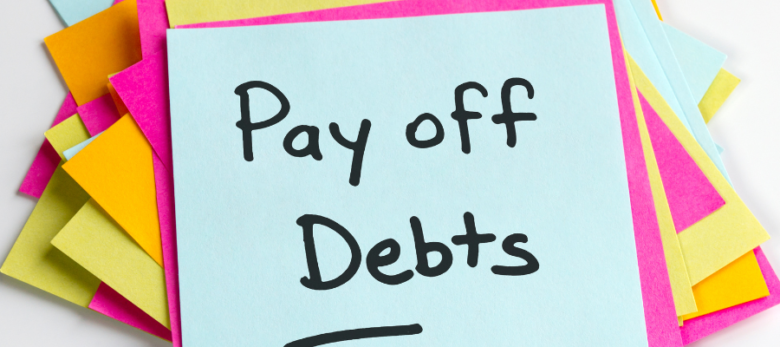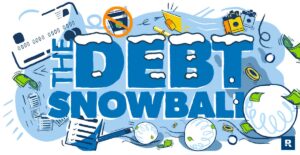No matter whether it’s credit card debt, mortgage payments, or student loans that you owe, there are various strategies available to speed up repayment of this debt faster. These may include earning additional income while decreasing expenses and avoiding new borrowing altogether. Begin by identifying all sources and amounts of your debt while tracking spending habits. Some may opt for the debt snowball method, which gives them small milestones as motivation each month in terms of paying down debts.
1. Focus on One Debt at a Time
One of the best ways to reduce debt is to focus on one debt at a time. Doing this will keep you motivated while making steady progress toward reaching your goals. Start by compiling an exhaustive list of all your debts, including balances, interest rates, and minimum payments for each. This can be accomplished either manually or using an app like You Need a Budget (YNAB).
Once you’ve created an accurate list of debts, the next step should be deciding how you want to tackle them. Some prefer using the debt snowball method, while others favor using an alternative such as debt avalanche, which prioritizes paying off high-interest debts first (saving both time and money in the process). It’s ultimately your decision.
2. Pay More than the Minimum
Revolving debt such as credit cards often only covers a small portion of principal, leaving room for interest charges to build quickly. To mitigate this effect, try paying more than the minimum payment each month if possible.
One method, known as the snowball method, prioritizes paying off smaller debts first to provide quick wins and build momentum. Others prefer data-driven approaches such as the Avalanche Method, which prioritizes debt repayment by interest rate. No matter which approach you use, paying more than the minimum monthly payment will help make strides faster towards debt elimination.
3. Save on Interest
Many people can reduce spending to free up cash to put towards paying off debts. Even cutting expenses by five to ten percent, such as groceries, utilities, and auto insurance premiums, could save enough to start chipping away at that mountain of debt.
Find ways to generate more cash to help accelerate debt repayment. Options could include taking on side gigs, using tax refunds toward debt payments, or getting consolidation loans—then choose an effective debt repayment strategy tailored specifically to your financial circumstances and budget.
4. Don’t Take out New Debt
Though it can be tempting to splurge on something you can afford, incurring new debt will only delay your progress toward paying off existing balances. Avoid this trap by not taking out new loans or credit cards. Start by compiling a comprehensive list of your debts, with their balances, interest rates, and minimum payments. Consider taking out a personal loan for easier repayment with lower interest charges.
Once you understand how much debt you owe, use any extra money towards paying down debt with the lowest balance first—this method, also known as the debt snowball strategy, can keep you motivated while expediting repayment.
5. Create a Budget
Establishing a budget will help keep you on track with debt payments and financial goals and can reveal areas where overspending might be occurring, enabling you to reduce both monthly expenses and debt payments and save money in the process.
Once you understand your debts, devise a plan for paying them off. Some opt for the “debt snowball method,” whereby smaller balances are paid off first while maintaining minimum payments on larger debts; others favor “debt avalanche,” where they prioritize paying off debts with high interest rates first.
6. Put Any Extra Money Toward Your Debt
Debt repayment can be both rewarding and motivating, especially when you witness its impact on your budget. Consider adding any extra income sources, such as a side hustle, to your budget plan, or reduce expenses such as daily lattes and streaming services that you no longer require.
As another way to save, taking advantage of sales and discounts is another effective way of cutting expenses. This strategy can save on necessities like groceries and utility bills as well as non-essentials like entertainment and dining out. Furthermore, look into opportunities that allow you to earn extra cash, such as part-time jobs or selling unwanted items; doing this could speed up debt repayment and help you reach goals faster.
7. Don’t Splurge
Debt repayment requires self-discipline and sacrifice. To speed the process up, consider cutting frivolous spending such as dining out less often or forgoing Starbucks and premium cable subscriptions that could save $20+ every month.
Create a list of all of your debts, including amounts owed and interest rates owed. This can be done manually or with budgeting software like Empower. In addition, include all baseline expenses like housing costs, utility bills, food costs, and transportation.
9. Limit your entertainment spending.
If you’re struggling with debt repayment, cutting entertainment spending might help. This might involve cutting unnecessary costs like going out for lunch or cancelling streaming subscriptions.
Utilize sales and discounts to save on entertainment, for example, by taking advantage of sales or discounts such as movie ticket coupons or promotions online. For instance, using such tactics, you could potentially purchase movie tickets at half the cost you would find them at the theater! Once you’ve reduced expenses, subtract what goes out from what comes in and calculate the amount that can go toward debt repayment—then prioritize this goal.




